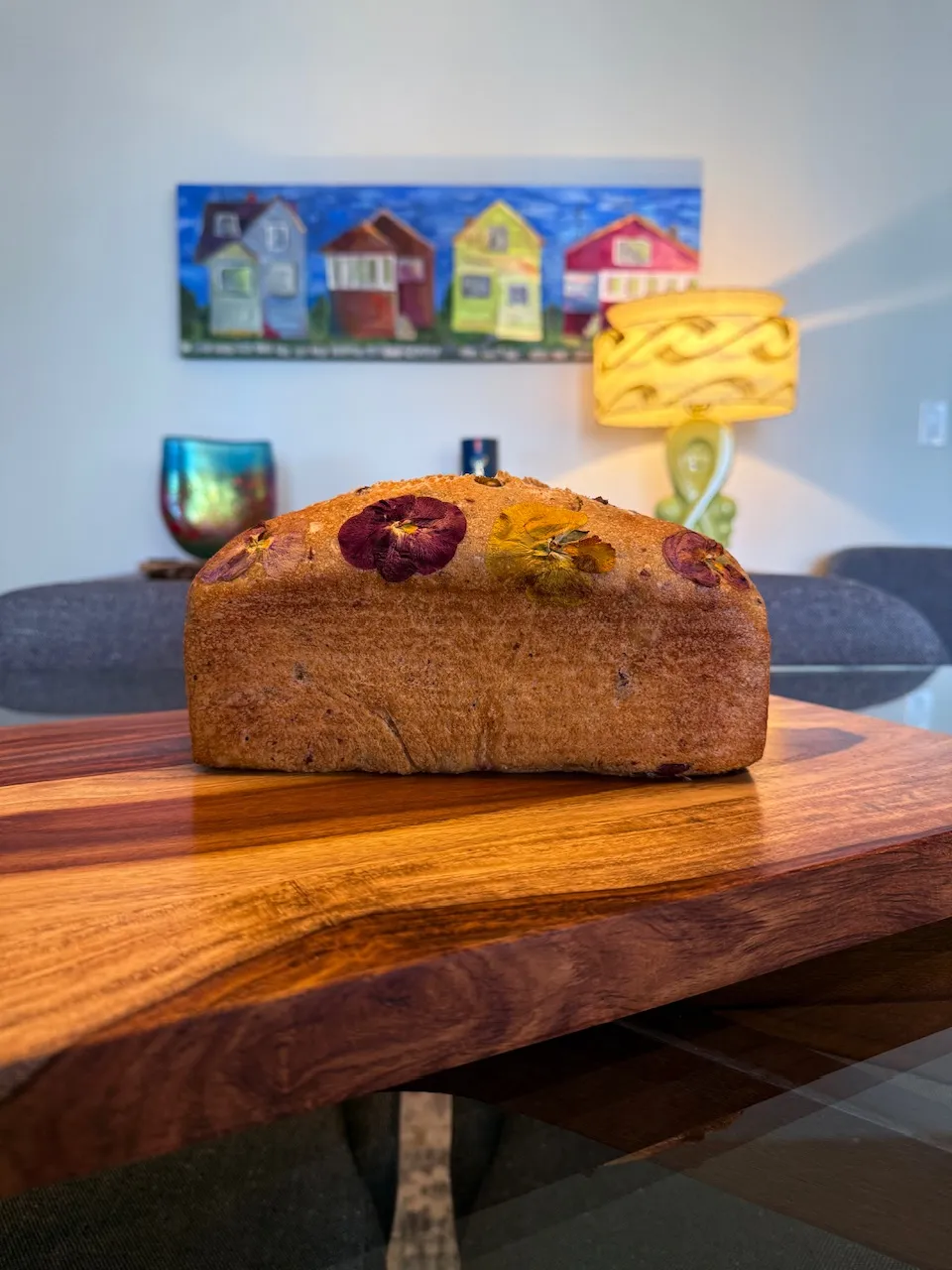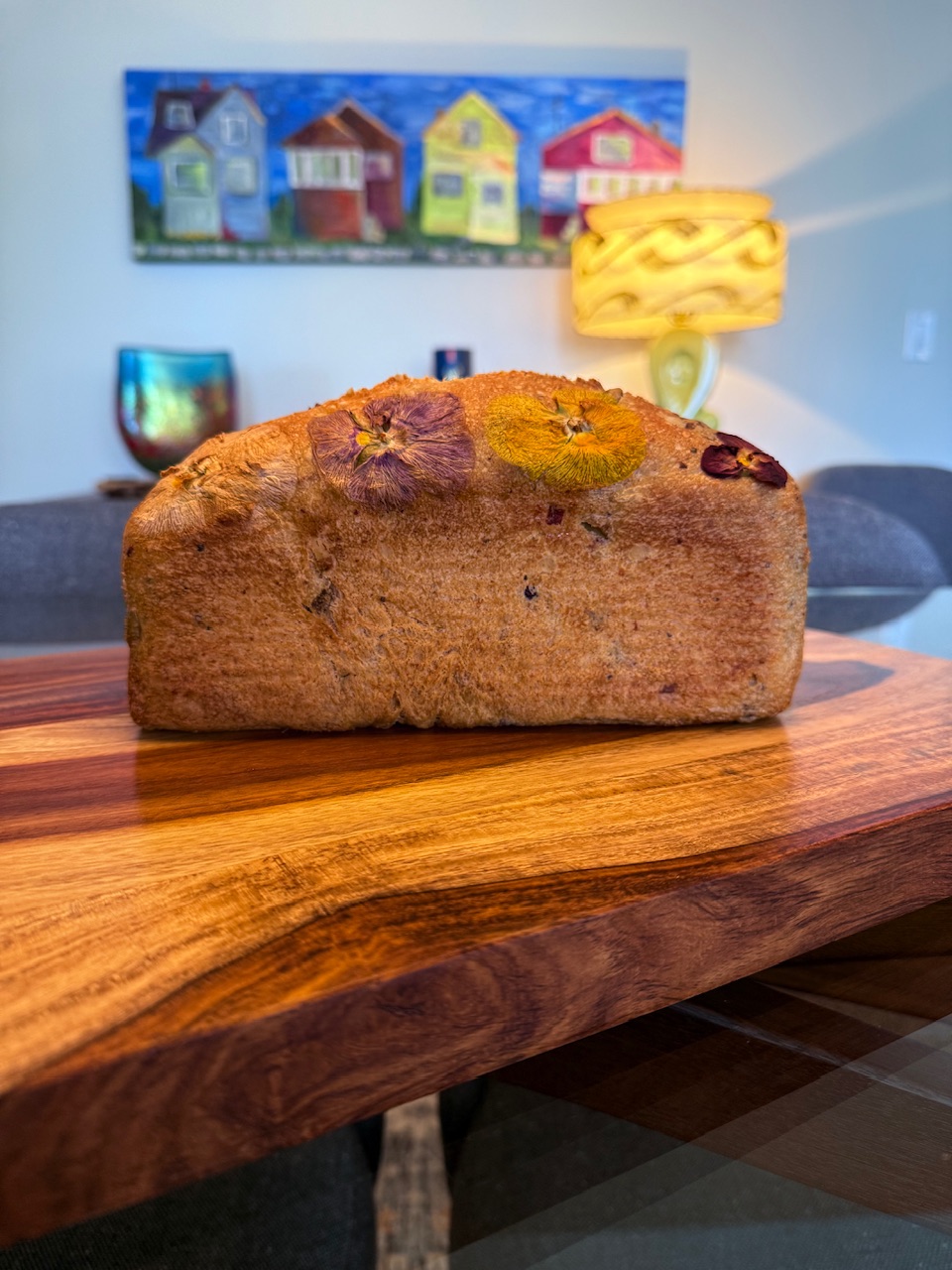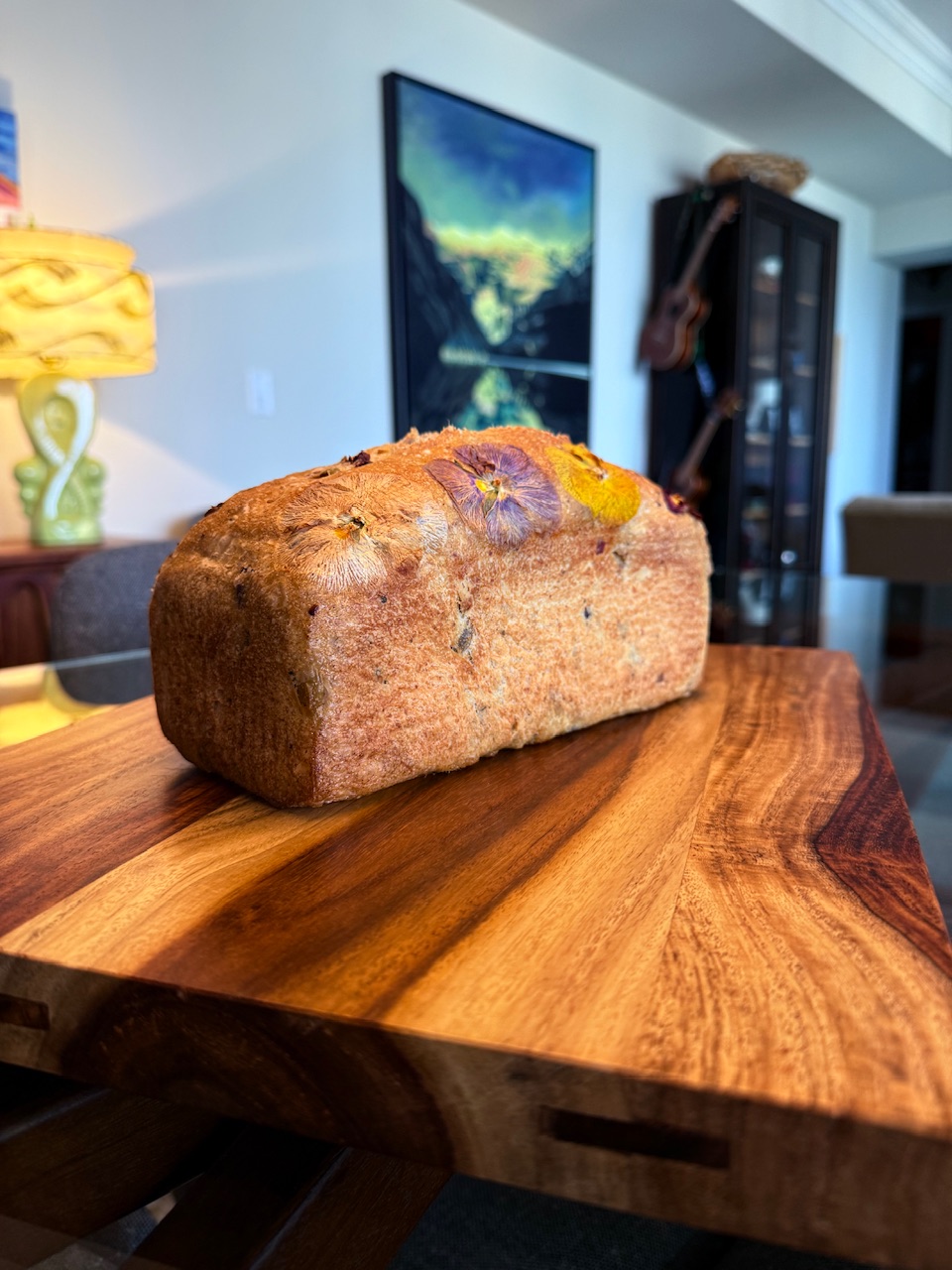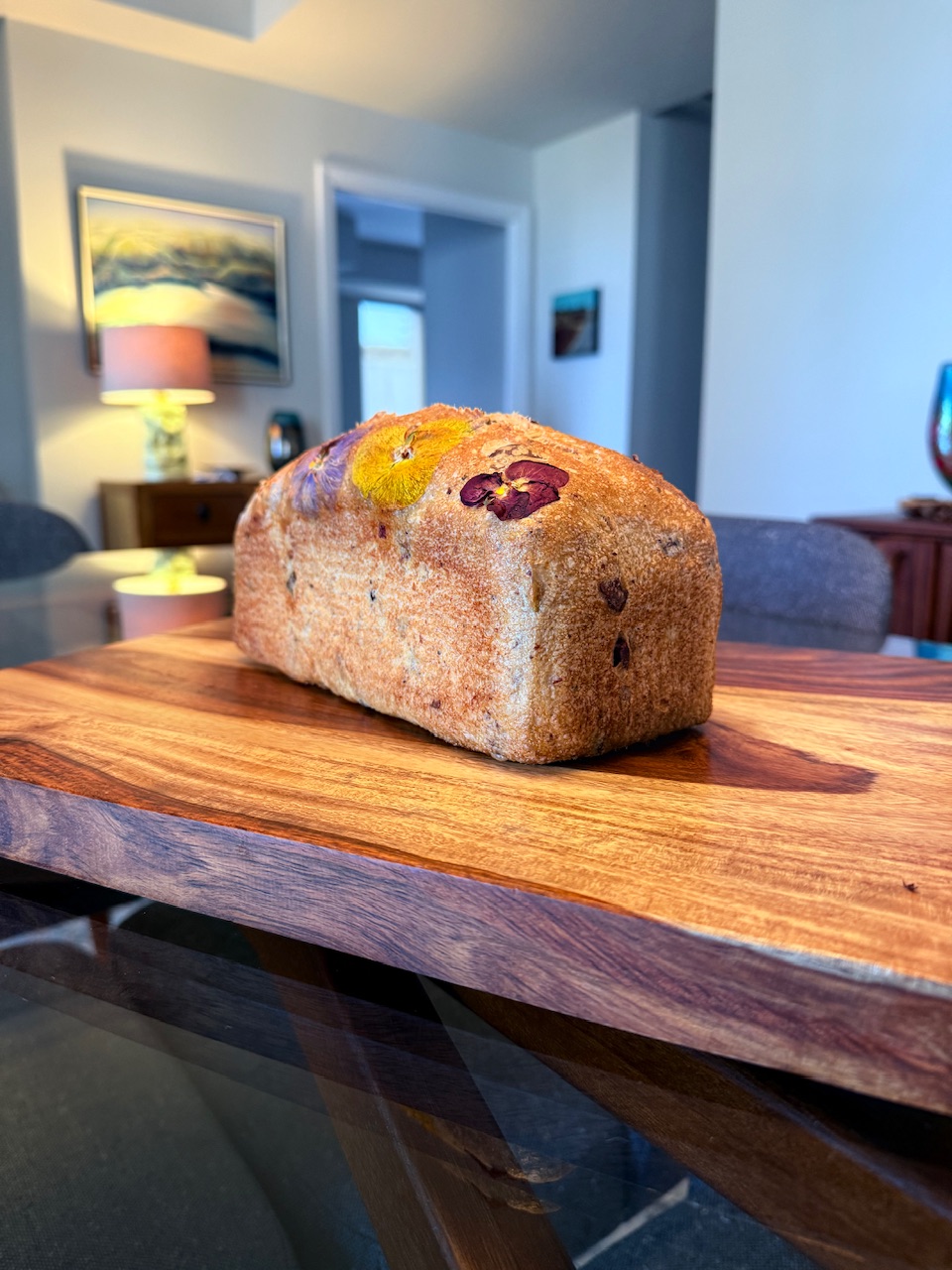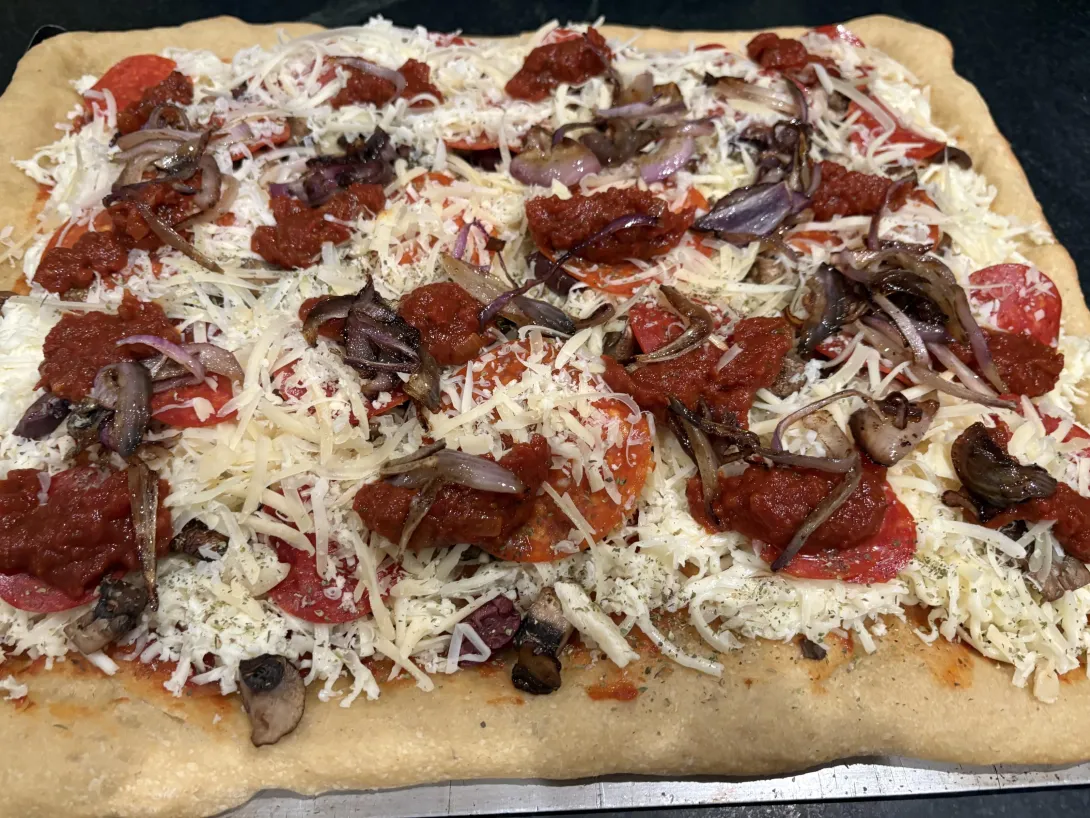Whole Wheat-Spelt Ricotta Sourdough

I love adding fresh ricotta cheese to bread. It creates a nice soft, flavorful crumb. I also added some tasty cocoa-flavored honey, which really brought this one over the top.
I made one large miche for this bake. The crumb came out nice and open, and the crust was dark and flavorful.
This bake had 73% fresh milled flour, milled with my Mockmill 200. I sifted once with a #30 drum sieve and re-milled at the finest setting.
- Log in or register to post comments
- 6 comments
- View post
- Isand66's Blog

